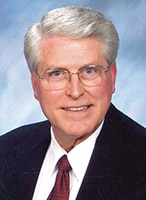 Simeon and Anna
Simeon and Anna
Formations: December 29, 2019
Scripture: Luke 2:25-40

Michael K Olmsted
Luke, the single Gentile gospel writer, knew the Apostle Paul and was an early convert to the Christian faith. The earliest churches were strongly influenced by their Jewish roots. Many Gentiles who were disillusioned by the immorality, empty promises, and corruption of pagan religions found in Judaism a new spiritual hope.
Luke’s narrative offers some details and connections that the other three gospels do not include. For instance, Luke tells us about Zechariah and Elizabeth, the shepherds of Bethlehem, and now Simeon and Anna at the dedication of the eight day old Jesus in the Jerusalem temple.
We don’t realize the full meaning of this normal baby dedication until we see the spiritual connection both Simeon and Anna make with God’s promised Messiah. Simeon celebrated the fulfillment of God’s ultimate promise: “my eyes have seen salvation, which you have prepared in the presence of all peoples, a light for revelation to the Gentiles and for glory to your people Israel” (v. 30-32). The prophet Anna joined the celebration as she “began to praise God and speak about the child to all who were looking for the redemption of Jerusalem” (v. 38).
In effect, Luke was writing an account of the good news that would capture the attention of the larger world beyond Israel, often referring to the role of God’s Spirit in Jesus’ life and ministry. Note that Luke’s second writing, Acts, is clearly addressed to a fellow Gentile named Theophilus, which means “dear to God” (Acts 1:1).
Luke is laying a solid foundation for understanding who Jesus is by showing his connection with Jewish law. A male child was to be circumcised eight days after birth, and a firstborn son “belonged to God” and must be “redeemed” with a payment of five shekels (Exodus 34:19-20). Also, the mother must be ritually purified after giving birth (Leviticus 12:1-8). Joseph and Mary were faithfully fulfilling the law of Moses. This emphasis probably goes beyond merely teaching about Judaism for the world’s information to show that God has been at work in the formation and history of the Jewish people as God’s witnesses for the entire world.
Mary and Joseph were both amazed and troubled by Simeon’s words: “This child is destined for the falling and rising of many in Israel, and to be a sign that will be opposed … and a sword will pierce your (Mary’s) soul too” (vv. 34-35). The 84-year-old prophet Anna also appears, praising God and speaking “about the child to all who were looking for the redemption of Jerusalem” (v. 38). Luke is very carefully laying a foundation of spiritual hope for the world beyond Israel. Reading from our modern perspective we can see more clearly the breadth of God’s plan.
For generations the Jews had longed for the Messiah to come. Then they would be the shining light of God’s might before the world. But Luke displays the promise of God’s grace for all people through two old people who have spent their life praying and sharing the hope of God’s salvation. Their hope has become reality.
But the Jewish leaders, the priests, Levites, Pharisees, and Sadducees are not found in this wonderful scene. They will appear later to accuse and condemn Jesus for breaking God’s laws and being a false prophet. Luke does not tell the story of the star gazers from the east, or the sojourn of the family in Egypt because of Herod’s threats. He moves on to the childhood of Jesus and the beginning of his public ministry, the dramatic and beautiful unfolding of God’s grace for the entire world.

Pixabay
Mary and Joseph must have been stunned by the pronouncements of Simeon and Anna. These were simple people who lived far from the political intrigues and tensions of Roman dominated Jerusalem. Simeon’s words in particular warn of danger, which will appear shortly and force Joseph and Mary to flee to Egypt. (See Matthew 2:1-18.)
Simeon and Anna, like the unlikely shepherds, were not the expected voices announcing God’s Messiah had arrived. When secular government and the religious establishment become partners, the result is never beneficial to either church or individual freedoms. Simeon and Anna did not speak for the religious power brokers; they spoke for God. The four gospels detail the contrast between God’s grace and the world’s spiritual darkness that is evident today. But like Simeon and Anna, we must be faithful to God in spite of the destructive thinking and actions of those in positions of power and authority.
What voices dominate our world? Whom do we believe and grant authority over our lives? I hear unsettling voices declaring that Christianity is only one of many worthwhile religions that can help us live better, that church and state can partner in making our nation greater and more prosperous, and that God ordains whoever should rule. Voices like those of Simeon and Anna are often missing or shouted down by those in authority.
What will be our testimony in this Advent? Will we share the hope given to our world in the form of a simple birth in an out-of-the-way village, to parents without impressive portfolios, celebrated by shepherds, and announced by two odd old people in the Jewish temple? It is not enough to place a nativity set under your Christmas tree and attend the Christmas Eve service at church. We must take direction from Simeon and Anna who spoke the truth, ignoring the popular religious fashions of their society and both captivated by the incredible gift of God’s love. Against the background of growing world tragedies, natural disasters, and political upheavals, we must become the voices that celebrate God’s love and grace.
“Merry Christmas” is inadequate. Our testimony is a word of hope: “God so loved the world that he gave his only begotten Son, that whoever believes in Him should not perish, but have eternal life” (John 3:16).
Formations is a curriculum series from Smyth & Helwys Publishing, Inc. through NextSunday Resources.
The PDF download requires the free Acrobat Reader program. It can be downloaded and installed at https://get.adobe.com/reader (uncheck optional offers first).


